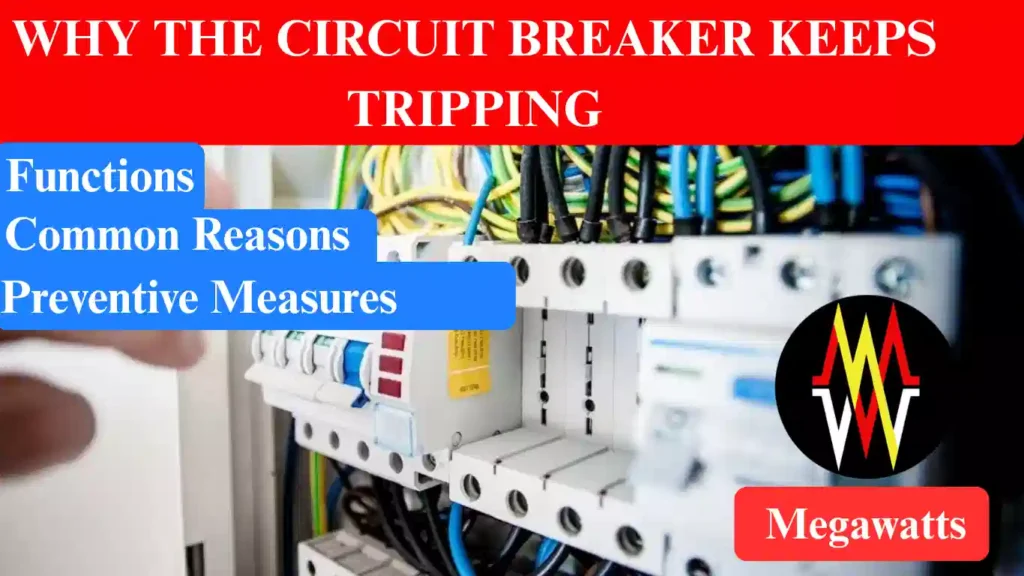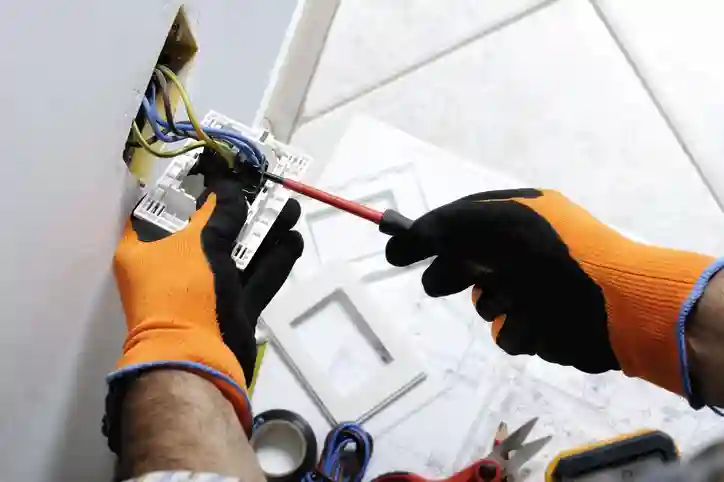
A circuit breaker keeps tripping is a frustrating problem for everyone without any apparent reason. After the reset of the circuit breaker, the power flows into the circuit, but soon it trips. It’s true, the issue annoys everyone, but in reality, the circuit breaker is only operating to protect the circuit from unwanted electrical hazards.
Table of Contents
In this blog, we will dive deep into why the circuit breaker keeps tripping, the common causes and fixes, and how to troubleshoot the issue and prevent any further tripping of the circuit breaker.
Function of Circuit Breaker
Circuit breaker is the equipment that makes or breaks the electrical circuit at home or a substation. It functions to isolate the electrical circuit by disconnection of its mechanical contacts, when abnormal drawal of current in the circuit occurs because of some electrical faults in the circuit.
Inside the standard circuit breakers, two tripping mechanisms exists.
Thermal tripping mechanism: This mechanism protects the electrical circuit from overloading of the circuit. The bimetal strip, present inside the breaker, bends, when the current in the circuit is high for a long duration.
Magnetic Trip mechanism: It protects the circuit from short-circuit faults. This mechanism trips the breaker instantly when the current surge in the circuit is too large.
The tripping of a circuit breaker is not always, necessarily a fault but if the circuit breaker keeps tripping, then it is sure that the electrical circuit or the breaker has some fault.
Common reason why the circuit breaker keeps tripping
Circuit Overload
The overloading of a circuit is the most common reason for a circuit breaker to trip frequently. This happens when too many appliances draw power from an electrical circuit. This makes the current go high in the circuit beyond its rated value and the circuit breaker senses this and trips the circuit to stop overheating of the conductors.
Example: Plugging in of multiple electrical appliances like air-conditioner, water pump, and refrigerator into a single circuit with a circuit breaker rated for 20Amps. When the combined current in the circuit is more than 20 Amps, the circuit breaker will trip.
Signs of overloading:
- Circuit breaker will not trip instantly but after few minutes.
- Lights connected to the same circuit will dim and flicker before the tripping of the circuit breaker
- The electrical outlets will be warm after the tripping of circuit breaker.
Fix: Unplugging of appliances from a single circuit and redistributing the load across multiple circuit or uprating of the circuit to handle higher current values.
Short-circuit
When a hot wire or live wire touches a neutral wire, it creates a short circuit. The current surges high as short-circuit occurs in the system. The surge of current is much higher than the wires can handle. The circuit breaker trips immediately to save the wiring damage and risks of fire.
Causes:
- Damaged insulation of the wires are most common cause as the electrical wirings are seldomly checked.
- A loose terminal connection is another cause that can produce a short circuit.
- Faulty appliances are connected to the system.
- Moisture in the electrical panel can potentially cause a short-circuit.
Signs of short-circuit:
- The breaker trips instantly with a pop sound.
- The outlets will have burnt marks or burning smells around it.
- After the reset of breaker, the circuit breaker trips instantly.
Fix: Unplug every appliance from the circuit and reset the breaker, if the breaker trips again, professional help will be needed to test the circuit.
Ground fault
A ground fault occurs when current travels from the phase wire to the ground either via the ground wire or via grounded structure. It is a dangerous fault as it can be fatal for anyone who comes in contact with the leakage current.
Causes:
- Moisture and water near the outlets or wiring can cause leakage current.
- Damaged electrical wires can cause this leakage.
- Faulty equipment with internal damages causing the leakage.
Fix: Inspection of the leakage area and keeping it dry can solve the leakage, for damp areas use of GFCI breakers is recommended.
Arc Fault
It is created by the sparking or arc between a same damaged conductor, or between two conductors touching intermittently. This type of faults can potentially cause electrical fire as the sparks can ignite the combustible surrounding substances.
Causes of arc faults:
- Loose terminal connection can give rise to sparking and arc faults.
- Damaged and aged insulation of the wirings.
- Rodents bitten wires will cause sparking in the wire leading to arc fault.
- Excessive tension in electrical cable may give rise to arc faults.
Fix: Installation of AFCI breakers in the circuit and if the AFCI breaker trips frequently, the circuit must be thoroughly checked by a professional. The arc fault issue must never be neglected.
Faulty Circuit breaker
Wiring is not always the issue, the Circuit breaker itself at times clog its functionality. It is mostly because of aging and continuous operation that the internal parts wear out from fatigue and corrosion.
Signs of a faulty breaker:
- The breaker will feel loose upon physical inspection
- The breaker will trip randomly with no probable cause.
- Won’t hold on to reset even after plugging every appliance out of the circuit.
Fix: If the breaker is old and showing these issues, replacement of the breaker is the solution.
Circuit breaker keeps tripping? Preventive measures
Here are few preventive steps that can be undertaken to tune down the frustration of the circuit breaker keeps tripping.
Proper load distribution: Do not plug too many appliances in the same circuit. Since, circuit breaker keeps tripping from overloading
Labelling of the panel: Labelling is important to know which circuit breaker controls which circuit and area of the home/industry.
Periodical wiring inspection: periodic inspection is essential to keep the electrical circuit healthy along with preventive maintenance.
Upgrade outdated panels: Use of modern AFCI and GFCI breakers adds layers of protection to the electrical circuit instead of the standard circuit breaker and enhances safety.
Call for professional help if

- The circuit breaker trips instantly after reset, even after turning off all appliances from the circuit.
- Sensing burning smell from the outlet or buzzing sound, call an electrician.
- If multiple breakers on the panel trips at the same time even after reset, call an electrician.
- If main circuit breaker trips frequently, it will need professional help.
This article is a part of the Switchgear, where other articles related to switchgear are discussed in details.
